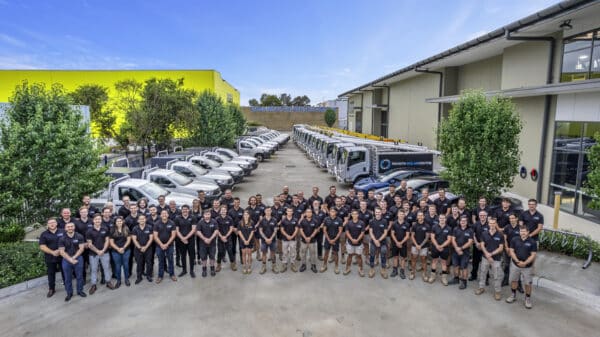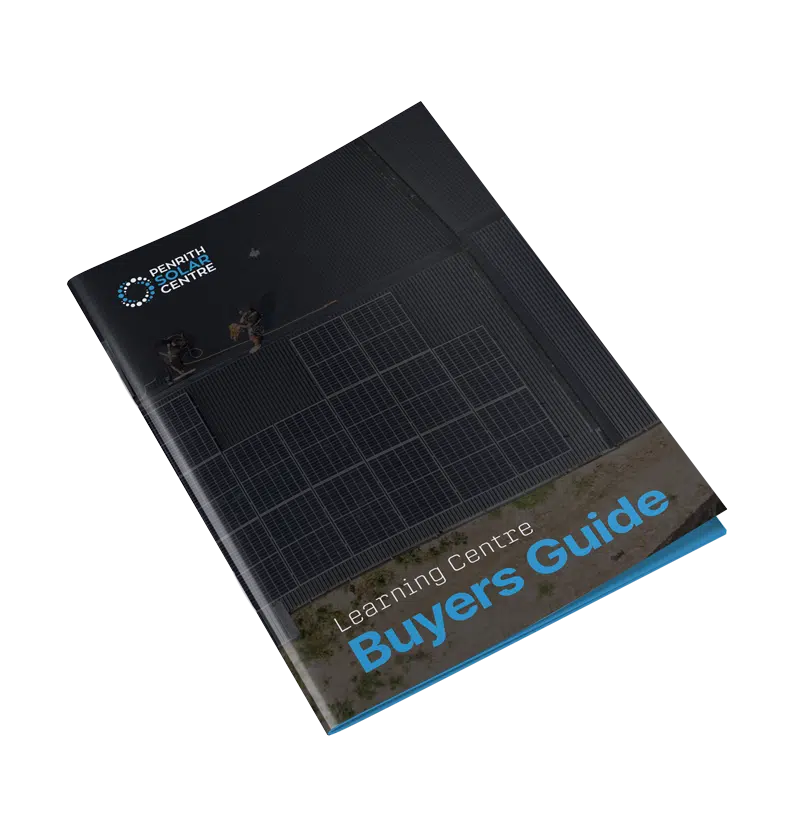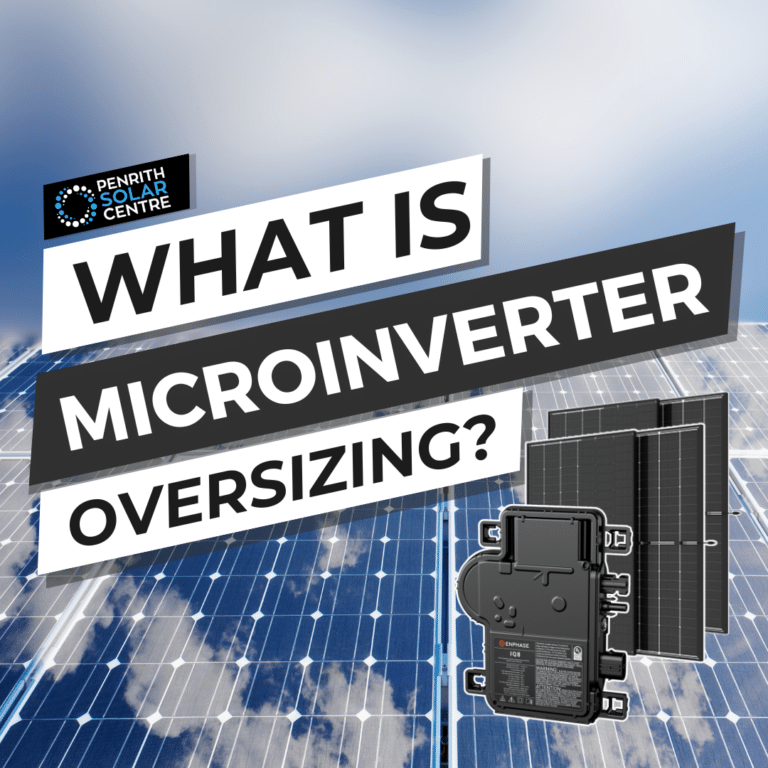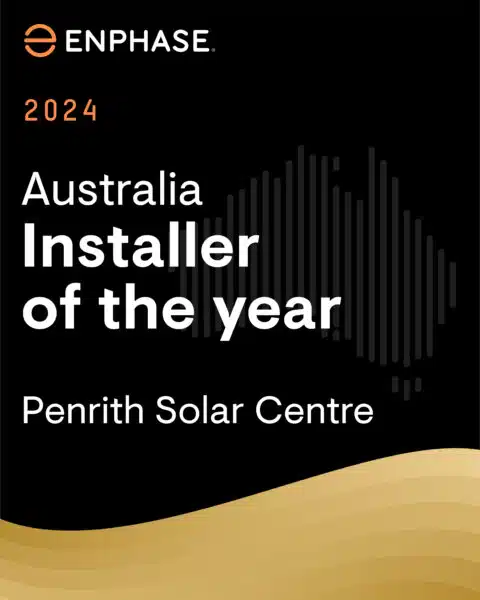There’s a lot of misinformation on the Internet about solar installers recommending a 6.6kW string system with a 5kW central inverter. They’re promoting them, and we disagree with the practice.
The average size of the microinverter solar systems we install is 11.7kW. That’s almost twice as much energy as what the competition is recommending.
At Penrith Solar Centre, we understand that families today use more energy than they did a decade ago. There are more electronic devices in our homes and we’re more reliant on energy than ever before.
And it’s looking like that trend is going to continue with electric vehicles, smart home devices, and higher power needs. Don’t forget about banishing and abolishing gas in Australia. Something will need to heat your home, your water, and your food.
It’s safe to say your energy needs will keep growing. Investing in a solar system that meets these future needs is smart. An 11.7kW solar system can be the perfect solution.
In this article, you’ll learn the following:
- Why You Should Choose an 11.7kW Enphase Solar System
- Stats for an 11.7kW Enphase Microinverter Solar System
- What Do You Get with an 11.7kW Enphase System?
- Are There Any Solar Rebates for Enphase Systems?
- Carol’s Experience with Penrith Solar Centre Installing an 11kW Enphase System
By the end of this article, you might be interested in upgrading your quote to make certain your solar system meets your evolving energy needs.
Why You Should Consider an 11.7kW Enphase Solar System (or Thereabouts)
We’re using an 11.7kW system as an example because it’s the average size of systems we install.
How do you use energy? Asking this question is the beginning of every solar journey.
- What are your energy usage patterns?
- When are you home? Is the sun up? Does everyone work or go to school?
- What are you powering? What season is it? Do you have an air conditioner or heater? Any EVs yet?
- How many people are in your home and what are their habits? Is your family big or small? Who is using what and when are they using it?
We’re sure your head just started spinning as you see the potential for how much energy is running through your life and lifestyle.
An 11.7kW system has a lot of power. It can meet your current and future energy needs. This system size is perfect for families of four or more who use a lot of energy. It’s enough to power large homes and electric vehicles.
Considering a system of this size means you are ready for the future. A system between 10 – 13kW will provide a balance between meeting current energy needs and preparing for future increases.
This list of questions looks a lot like the one above:
- What will your energy usage patterns be in ten years?
- When will you be home in ten years? Will you be working from home with a new career? Will someone finally launch their home business? Will anyone in your home retire?
- Do you have an electric vehicle in ten years? What about the kids? What other magical devices will be invented over the next decade or two? What devices are you powering during the day versus night? Remember to account for the same seasonal considerations in ten years. Will you have enough power to get you through more frequent blackouts? Will you finally get that pool you’ve always wanted and how much power will it use?
- How many people are in your home and what are their habits? Teenagers use a lot of energy, how many of those will you have in ten years’ time?
This system size offers ample power to cover future increases in energy consumption. Whether it’s due to growing families, new appliances, or electric vehicles, an 11.7kW system ensures you won’t outgrow your solar setup.
We’ve never heard a customer complain about having too much solar on their roof. In fact, it’s always the opposite.
If you’re interested in learning why other solar companies recommend a system about half that size, you might want to check out the following article titled, Why Do Companies Sell 6.6kW String Systems with 5kW Inverters?
Stats for an 11.7kW Enphase Microinverter Solar System
Initial Cost:
- Enphase Microinverter System: for an 11.7kW Enphase system, the price will vary depending on the complexity of the installation. Most of the time, we’re well under $2.00 per watt.
Installation Costs:
- Professional installation is required for an Enphase system. An installer can’t install Enphase until they pass accreditation.
- Additional days require an additional day rate. Once the system goes above 36 panels (16.2kW), we automatically book an additional day. There are other factors that might add an additional day to smaller systems. If you’d like to learn more about that, we suggest you check out the following article titled, How Long Will My Solar Install Take?
Maintenance Costs:
- Lower maintenance due to fewer points of failure.
- Microinverters come with a warranty for 15 years that’s upgradable to 25 years. This means micros can match the warranted lifespan of most solar panels.
What Do You Get with an 11.7kW Enphase System?
Panel-Level Optimization:
- Optimises each panel’s performance individually. The more electricity generated by the panels, the more energy is output, and the less energy you import from the grid.
- Better performance in shaded conditions, adaptable to panel mismatch, and varied panel orientations.
- Maximises energy output from each panel because each panel operates independently in decentralised system.
System Monitoring:
Energy use monitoring (or consumption monitoring as it’s known in the solar industry) is a process of reading the data from your system and making choices around your energy based on that data.
- Provides monitoring through the Enphase Enlighten App.
- Identifies and addresses issues quickly for service or repair if needed.
If you’re interested in learning a bit more about how microinverters compare to string inverter solar systems, you might want to check out the following article titled, Microinverters vs. String Inverters: A Transparent Comparison.
Are There Any Solar Rebates for Enphase Systems?
Yes. It significantly reduces the upfront cost, making a system of this size even more affordable and attractive for homeowners.
We discount the value of the rebate in our quotes to our customers.
This means the price we quote for a system is the price you pay.
Currently, the federal government offers a “rebate” in the form of Small-scale Technology Certificates (STCs). The STCs are virtual tokens that a corporation with a huge carbon footprint purchase from solar installers to help tip the balance back towards renewables.
The government regulates this process. It’s a rebate program that big companies pay out to us and we, in turn, deduct that from the price of your system.
Here are some stats:
Small-scale Technology Certificates (STCs):
- STCs are given based on the expected output of the lifespan of the system, but the scheme ends in 2030.
- Each certificate represents 1 megawatt-hour (MWh) of predicted renewable electricity the solar system will produce in its lifespan.
- The value of STCs fluctuates but is currently around $38 per certificate.
- Approximate STCs for an 11.7kW system: 113 STCs
- Rebate Value: 113 STCs * $38 = $4,294
There’s also a recently announced solar battery rebate by the NSW government that’s going into effect in November. Very little has been revealed about what it is or what it offers, but it’s expected to take thousands off the upfront price of batteries for Australians.
If you’re interested in learning about the rebate for solar, you might want to check out the following article titled, How Does the Solar Rebate Work?
If you’re interested in learning about the solar battery rebate (what we know so far, anyway), you might want to check out the following article titled, Everything You Need to Know About the Home Battery Rebate for NSW.
Carol’s Experience with Penrith Solar Centre Installing an 11kW Enphase System
Here’s a customer testimonial from Carol in Bringelly. In her own words, she’ll explain why she went with an 11kW system and Penrith Solar Centre to install it.
Playing By the Joules; Let’s Talk Micros at Penrith Solar Centre
Now you understand some of the reasons why we recommend somewhere in the neighbourhood of 10kW – 13kW for most people, so 11.7kW (our average size) is perfect for most families.
An Enphase system with microinverters is economical, efficient, and offers energy independence.
At Penrith Solar Centre, we’re experts in all things microinverters. We exclusively install them and believe in their ability to save you more money than a string system ultimately will.

If you’re interested in learning a bit more about the process of choosing components for your solar system, you might want to check out the following article titled, How to Shop for a Solar System.










